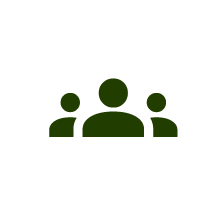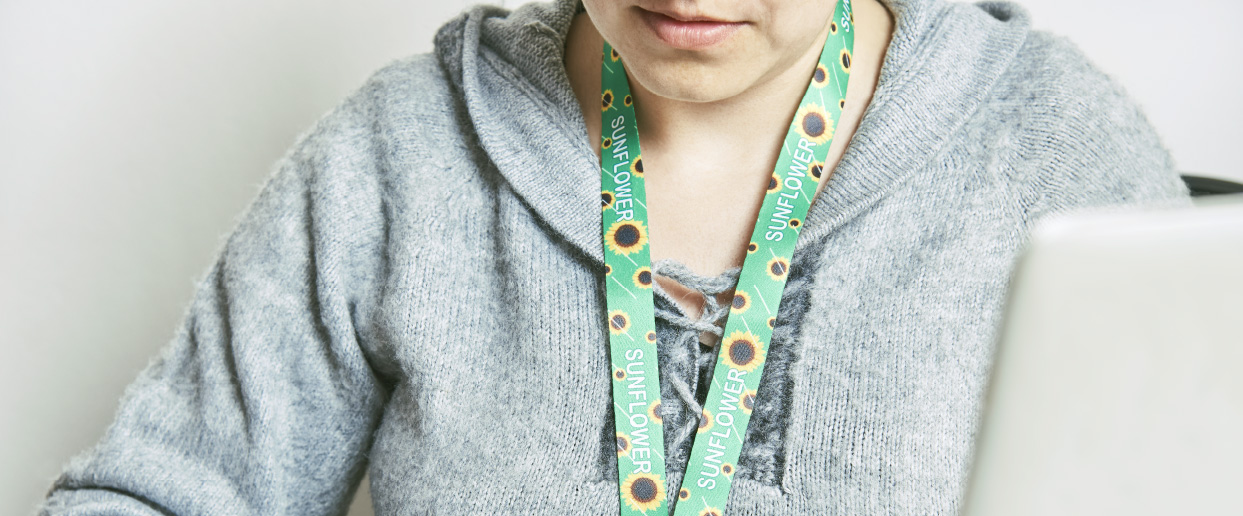Empathy is the key to recognizing hidden disabilities and building a more inclusive and welcoming world.
Invisibility does not cancel out validity
Feeling pain while waiting in line for a long time, finding it difficult to communicate, or feeling uncomfortable with lights, sounds and movements.
These are experiences that we can all have from time to time throughout our lives. However, for some people, these situations are an everyday reality.
Now think about going through these situations and still facing judgmental looks, being prevented from receiving help, simply because people around you don’t understand that you live with any of these difficulties. This is what happens to people who have hidden disabilities.
And there are
plenty of them.
Did you know that around 1.3 billion people worldwide have a hidden disability?
In Brazil, the figures are significant:
(Source: National Health Survey – PNS, 2019)
But what are the hidden/invisible disabilities?
Hidden disabilities, known as invisible disabilities, cover a wide spectrum of conditions that are not readily apparent at first glance.


This group includes people with
autism, Alzheimer’s, deafness, intellectual disabilities, Crohn’s Disease, Ulcerative Rectocolitis and even those who depend on prostheses and devices, but their needs are not always evident.
These people deserve our support, acceptance and priority in certain situations.

But if the disability is hidden, how can you tell??
The question of how to recognize hidden disabilities led to an inspiring initiative in 2016 at Gatwick Airport in England.
In search of a solution so that airport staff and other passengers could offer support to people with hidden disabilities, a critical collaboration took place. It was concluded that a simple lanyard could be an efficient answer.
This is how the “Hidden Disabilities Sunflower” (HD Sunflower) was created.
The success of this initiative has reverberated in various countries and institutions, including Brazil.
In July 2023, the country sanctioned Law No. 14,624, which brought changes to the Statute of Persons with Disabilities, establishing the use of lanyards with sunflower designs as a means of identifying people with hidden disabilities.
Why the
sunflower?
According to the organization in charge, the sunflower was chosen because it is a discreet identification, visible from a distance, cheerful and dynamic.
It also suggests happiness, positivity, strength, growth and confidence, and is universally recognized.
Who can wear the sunflower lanyard?
It is essential to understand that wearing the sunflower lanyard is voluntary. It represents a way of helping those who need support.

As for who can wear the lanyard, some aspects are still not completely clear.
The HD Sunflower website offers a list of non-visible disabilities, encompassing health conditions and chronic diseases. However, it is important to note that, according to Brazilian law, the use of the lanyard does not exempt the person from showing a document proving their disability if requested by an attendant or competent authority.
In Brazil, some conditions, such as ADHD and epilepsy, are not yet officially recognized as disabilities. However, the use of the lanyard can be a valuable tool to ensure that a child with ADHD receives the appropriate support in an amusement park, or that a person with epilepsy is assisted accordingly.
In situations where hidden disabilities require assistance and support, the sunflower lanyard can make a difference. This is a relatively new action, which is constantly evolving, and there is a lot to consider.
We must continue to promote the use of the lanyard and await the next steps in this ongoing fight for inclusion, raising awareness in society so that everyone can fully participate, regardless of their unseen struggles.
How to proceed when you spot a person with the sunflower lanyard?
The sunflower lanyard was originally designed to promote empathy among people who provide services and assistance to the public.
It is a sign that the person may be facing challenges that require understanding and perhaps more time in stores, at work, on transportation or in public spaces.
When you spot someone wearing the sunflower lanyard, it’s important to act sensitively:/span>
Empathy and understanding are key to creating an inclusive and welcoming environment.
By responding sensitively when identifying the sunflower lanyard, you will be contributing to a world where everyone is appreciated and respected, regardless of the difficulties they face.
Other important symbols


Help us spread this campaign
Now that you understand what hidden disabilities are and how they can affect people’s daily lives, we invite you to join us in spreading this important message.
Share the campaign and
download our materials!



